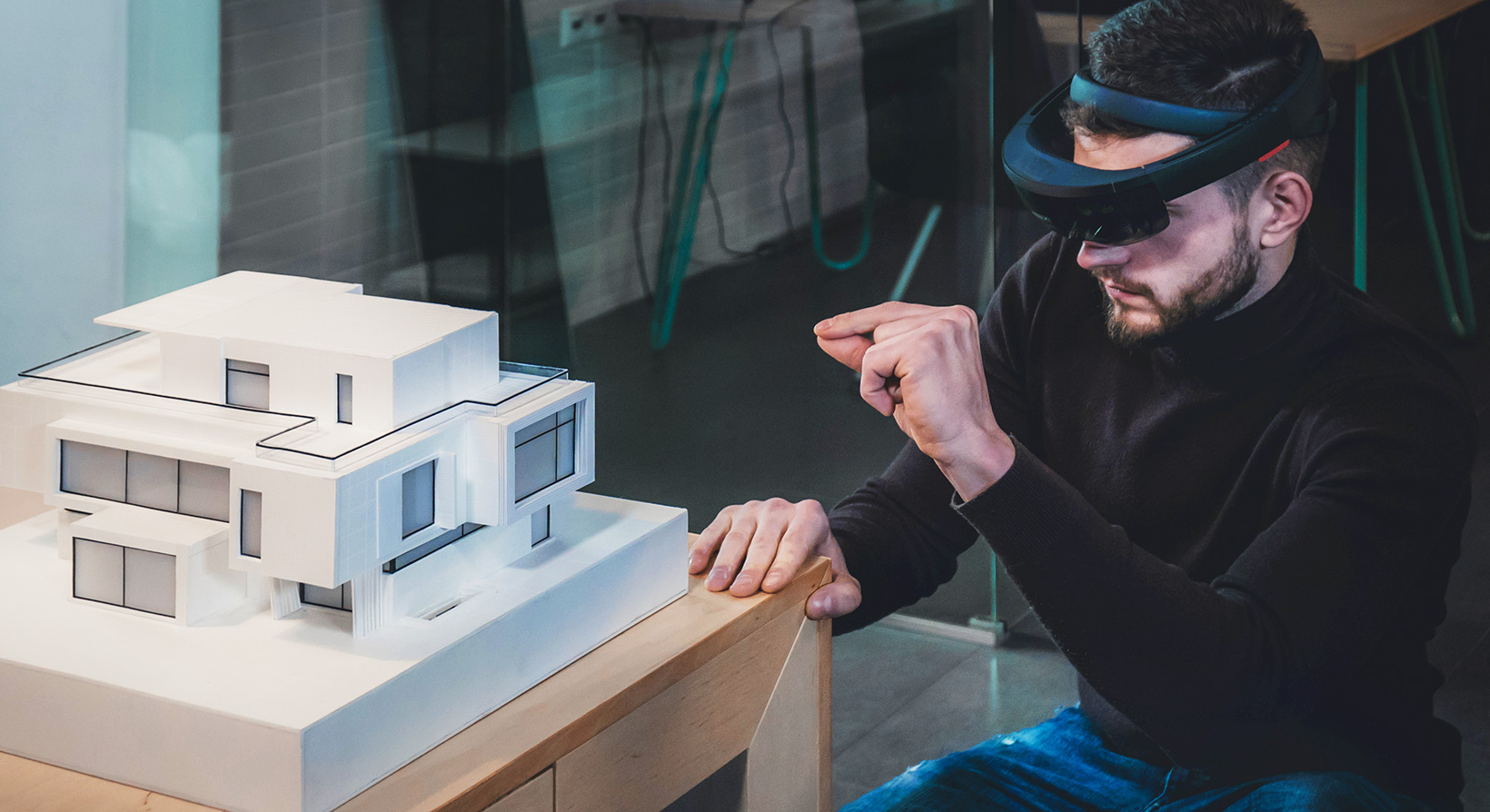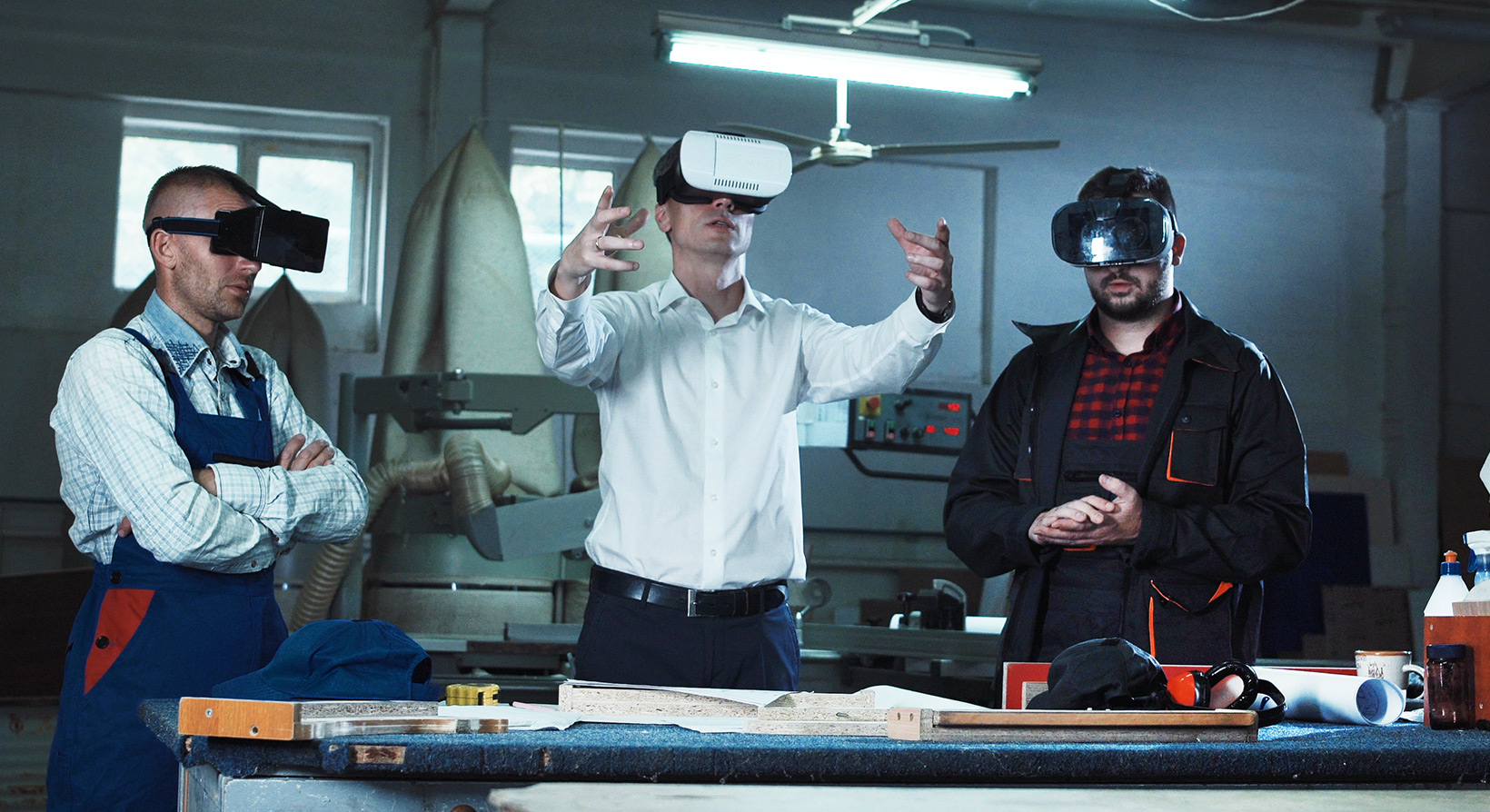
VR for Architecture: From Virtual Design to Real PR
We’ve often talked about why architects and real estate development firms should be looking to VR for marketing and presentations. Regardless of budget, just about every developer, realtor, architect, or interior designer can take advantage of Virtual and Augmented Reality to showcase a project inside and out.
Virtual Reality can show off a project at any stage, from pre-construction to proposed renovations and upgrades. VR can be customized and quickly updated, complete with interactive components that allow prospective homeowners or builders to change finishes, fabrics, layout ideas, and more.
Meanwhile Augmented Reality – VR’s practical sibling – is portable, easy to use, and carries a ‘cool factor’ in the eyes of most users. AR can be one of the most cost-effective pieces of cutting edge collateral available to property marketers, turning a simple piece of printed material into a portable scale model.
The use cases for VR and AR as presentation tools are only expanding, for the built environment and beyond. But today, we’re changing the viewpoint entirely, asking builders of the future to look to VR as a tool they can use themselves during conception and design.
Collaboration at the Start
No structure, building, or development is a project for one person. Several (or many) heads are required to weigh in, and some of these experts may be in far flung locations. VR is increasingly able to solve these problems through conferencing technology that places digital versions or avatars in each other’s spaces.
Yet the purpose of using VR at project inception now transcends just meeting. Designers and architects can use VR to draw, redraw, design, redesign, and most importantly, to troubleshoot in an environment powered by real-time responsive engineering knowledge.
The investment in a few VR headsets will be quickly absorbed by travel budgets being slashed, not to mention the added productivity of viewing and editing a rendering or model in real time.
Smart Design Throughout
If you envision VR as technology that germinated in the video game world, you’re correct. While early architectural VR was powered by game engines, purpose-built and data-rich software that retains BIM data has been evolving to service this expanding niche of the Extended Reality marketplace. This software evolution has begun transforming VR into a tool for design as much as marketing. VR for architecture will quickly allow designers and builders to peel apart renderings looking at framing, electrical, plumbing, and all critical project elements – at whichever stage the architects and/or clients need to see them.

Now we also need to point out that although it’s exciting to get the proverbial ‘keys to the car’ in your own hands, we still recommend collaborating with a VR firm throughout your project. While your building design of course remains your own work, having VR experts to consult with and guide the digital version of your product is essential.
While you work on the form and function of your building, your VR specialists hone the conversion of all 3D renderings, ensuring geometry is simplified, lighting is added, gaps fixed, objects culled, and so on. As your design evolves, the right VR team can meet you every step of the way.
Presentations that Work Harder
Back to the marketing tools we’ve been talking about all along, Extended Reality offers prospects an experience that is both thrilling and eco-friendly while being extremely effective in driving sales.
Equipping a sales preview centre with a few quality VR headsets can enhance (or even replace) the sample interiors and furnishings used to communicate the look and feel of your pre-construction project. Close faster and with clearer expectations when your prospects can tour an accurate version of their new home. And apply this strategy when communicating changes to existing owners; mail out a cardboard with a VR-compatible URL or instructions for downloading an app to ensure everyone stays on the same page.
Sales staff will grow to rely on VR as a tool beyond presales. For listings that warrant the investment, 3D photos can be used to create a virtual model of an already built home. A properly trained realtor could then take clients on a virtual tour of that property from anywhere in the world.
At its most affordable and portable, XR presentations can travel on a rack card or postcard in the form of AR as mentioned above. Any collateral bearing a QR code or download instructions can transform the combined paper and smartphone union into an AR experience that brings structures to life, literally leaping off the page as a three-dimensional model.
Pick the Right Partner
Stambol’s roots in architectural renderings make us the ideal partner for any firm wanting to thread Extended Reality products into processes throughout the life cycle of a building. Take a look at our portfolio and then ask us how we can work together.
Photo Credit: daniilvolkov and framestock / Adobe Stock


